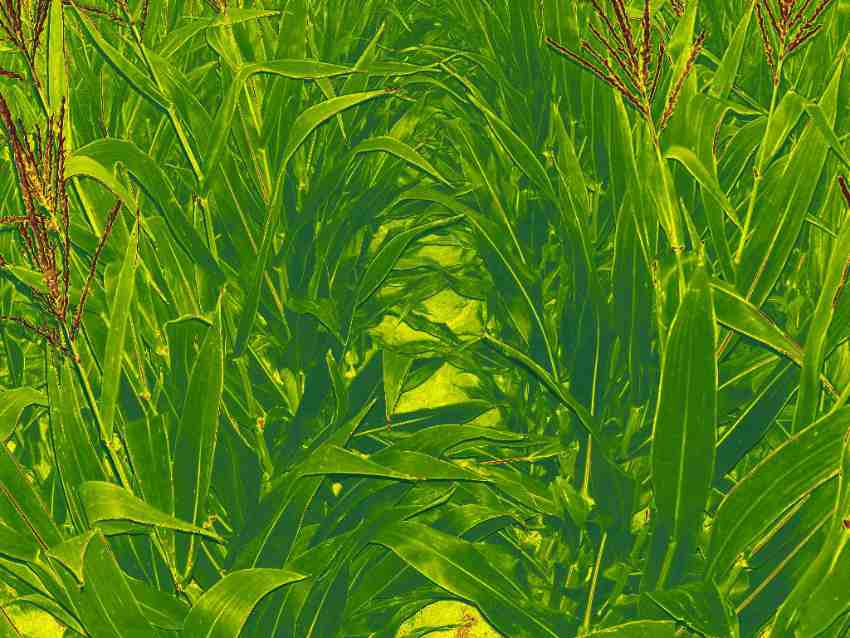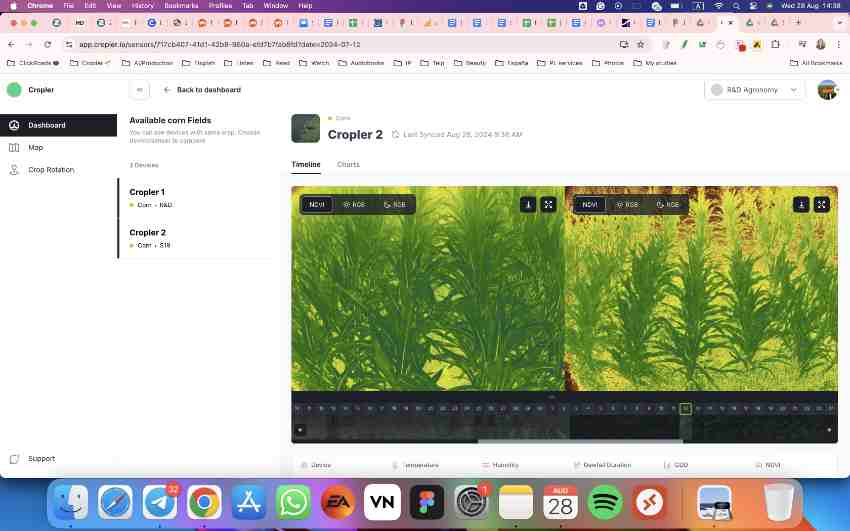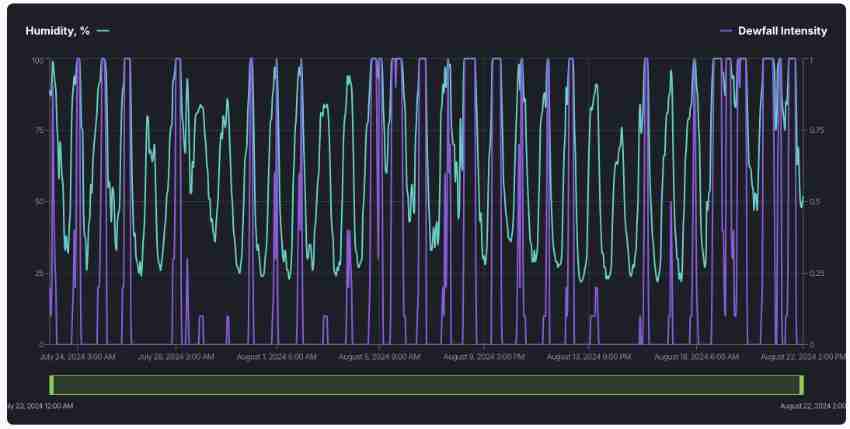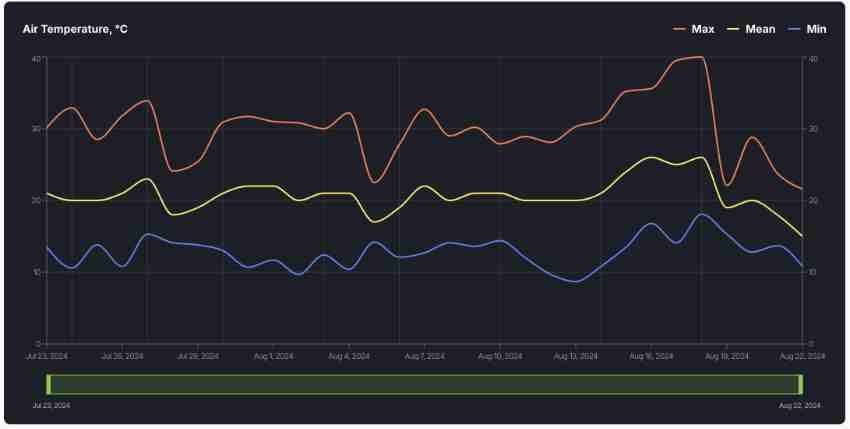Cropler is a global plant monitoring system for predictable agriculture that offers field insights and global yield analytics using agri-cameras and remote sensing data.
What are the company’s main areas of activity?
We answer to the main agronomical question: “When?”
Cropler technology uses time series photo plant data to provide agronomists, farmers, and seed and fertilizer dealers with timely recommendations and insights that directly influence the yield outcome: agri-operations timing, chemicals/fertilizers effectiveness, pests, and diseases emergence, decisions made effectiveness, etc.
What’s the news about new products/services?
We are thrilled to share some exciting updates to our agri-camera technology that will significantly enhance its features and advantages for users. First on the list is the addition of satellite imagery, which will give farmers an expansive and detailed view of their crops and the conditions of their fields. This new tool will empower farmers to make informed choices using real-time data gathered from both the ground and the air.
In addition, we are including Vardas Field ID for the management of digital field borders. This addition will allow for accurate and automated marking and tracking of field areas, ensuring that data collection is precise and resources are managed more effectively.
Moreover, we are designing a soil moisture sensor that will improve our current setup. This innovative device will provide vital information about irrigation needs, enabling farmers to use water more efficiently and boost crop production.

Looking forward, our preliminary work with AI will focus on integrating it with our Cropler technology to detect leaf damage. This AI-driven feature will help in spotting issues like diseases or pest outbreaks early on, allowing for timely action and reducing potential crop losses. These advancements reflect our commitment to providing farmers with advanced resources for enhancing both productivity and sustainability.
What are the ranges of products/services?
2024 was our first year when we started our sales. Now Cropler is represented through:
Hardware: the autonomous Cropler camera
It is designed for remote monitoring of plants in fields. It utilizes a multispectral optical sensor, enabling the capture of high-resolution RGB and NDVI images. Additionally, the device is equipped with pressure, temperature, and humidity sensors for weather monitoring.
The use of this sensor array allows for automated tracking of plant development dynamics and timely detection of issues, facilitating efficient fieldwork planning for agricultural operations.
The device is fully autonomous thanks to the utilization of a highly efficient solar panel and a built-in high-capacity battery.
The camera takes 3 series of snapshots per day: two during nighttime, after sunset, and before sunrise, and one during the day when the sun is at its highest point in the sky.
Weather data is measured hourly and transmitted to the server every 3 hours.
All data collected by the device is transmitted via the GSM network to the Cropler company server and is accessible to users via the web application.
Software: web platform + mobile application

It is a convenient dashboard with the field an agribusiness runs. There they have access to:
- Realtime crop monitoring and health tracking
- Field data-based team comm tool
- Time-based photo analysis
- Clear comparison of various fields and plant varieties
- AI assistants for key crops (coming soon in 2025)
API
Our clients can transfer extensive data into their current systems with our REST API. Also by installing Cropler API they are able to create applications to access and use data effortlessly as well as streamline analytics for more accurate agri-decisions.
What is the state of the market where you are currently active?
The remotely operated systems market in the European region is growing at an outstanding rate. This is a result of the adoption of precision farming, as well as the convergence of more advanced technologies such as artificial intelligence and IoT. The market is projected to grow at a rate of 8.7 CARG from the years 2023 to 2028. This is due to the increasing requirement for resource efficiency as well as problems brought by climate change. Western Europe is economically strong, advanced in technologies, and invests heavily in infrastructure development. Nevertheless, challenges regarding lack of awareness and utilization among farmers, particularly in developing countries’ markets are ever-present, In-house training and education of key market players is critical for the increase of the market further in the sector.

What can you tell us about market trends?
Well, 2024 was and still is relatively responsive to agriculture because market systems both internationally and in the European region are still in a state of dynamism.
Moreover, field photo, drone, sensor, satellite data also commonly referred to as precision farming could generate $ 13 bln to $ 17.5 bln in value by 2030 as stated by McKinsey. It is just beginning to find its roots in Europe, the US and now the third world through being used to cut costs and trade unnecessary spending for greater sources and the end result is increased productivity as seen in countries like Brazil and China.
Satellite imagery and remote sensing already provide (and will continue doing so) high resolution picture of the field at a certain time and acquisition frequency which provides a lot of information regarding the condition of the crops, the health of the soil and even the possibility of a produce. It enables the farmers to make the right choices at the right time especially where factors like weather is of essence.
On the same note, IoT-Enabled Cameras and Sensors are also revolutionalizing field-level monitoring as well. These devices provide the current state of the plant together with pests and environment within the plant at any time. These have been escalated and we have been desirous to incorporate alerts into these so as to assist the farmers to take the right action at the right time in order to avert problems that would go a long way in affecting production and utilization of resources.

What are the most innovative products/services marketed?
There are challenges to the pixel sharing between devices due to the restriction of the distribution board and even the existing IoT networks cannot support the number of devices that are required to aggregate information on large-scale monitoring. These problems, however, promises to end with the fulfillment of NB-IoT and 5G. These technologies will change landscape and millions of imagery data will be shared and analyzed instantaneously enabling decision making in real time.
Now, with use of photo monitoring, farmers will be able to spot and act on issues like pests, nutrient deficiencies, water stress, much faster and more accurately than ever before. More importantly, the index is Prediction of plant stem tissue damage via the analysis of multispectral and hyper-spectral images assists in deeper understanding of plant health.
According to McKinsey research, NB-IoT and 5G deployment, if such connectivity issues were resolved, can realize huge benefits, estimating a Gross Domestic Product growth potential of $130 Billion to $175 billion by 2030. This value pertains to the added efficiency and productivity that real time photo monitoring and agronomist analysis of these photos will inject into agriculture.

What estimations do you have for 2024?
We started sales this year and we do see the interest towards photo monitoring tech, our clients and partners see the potential and profit in it.
Next year we plan to scale our production and then, with the help of AI components, popularize our product worldwide, so that it becomes a standard tool in the toolkit of each and every farmer.

